Diego Sepulveda Adobe, the epicenter of Costa Mesa’s history, reopens to public
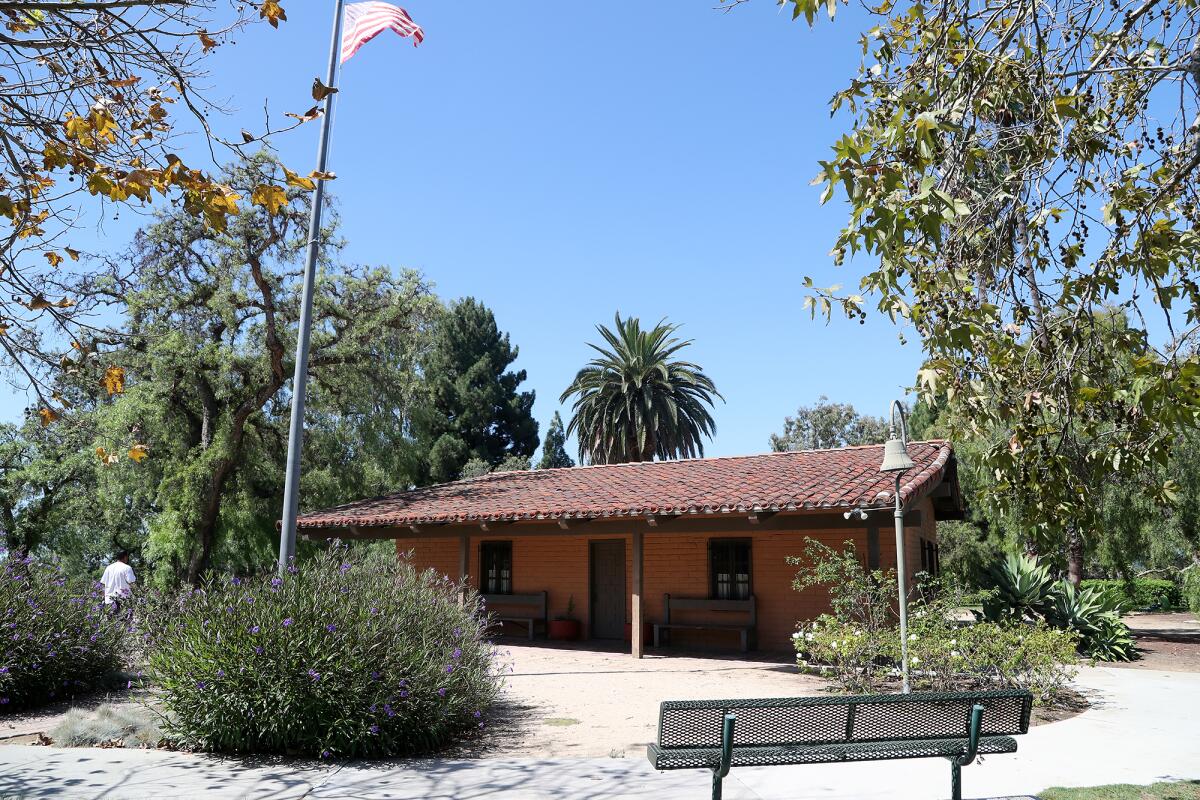
- Share via
A 200-year-old adobe structure situated on the wide green expanse of Costa Mesa’s Estancia Park is filled with stories about California’s early history for anyone who takes the time to listen.
Built on a tribal settlement with a sweeping view of nearby Fairview Park, the early 19th-century building constructed under the aegis of Mission San Juan Capistrano served as a waystation for weary vaqueros and herdsmen who traversed vast stretches of ranch land and needed a place to lay their heads.
Diego Sepulveda Adobe is one of Costa Mesa’s most historic sites and a repository for Early California artifacts and tales about those who visited and later settled on the property, as well as the community members who played a role in its preservation.
“Costa Mesa’s history is within these walls,” said Barbara Steck, president of the city’s Historical Society, which oversees programs at the site.
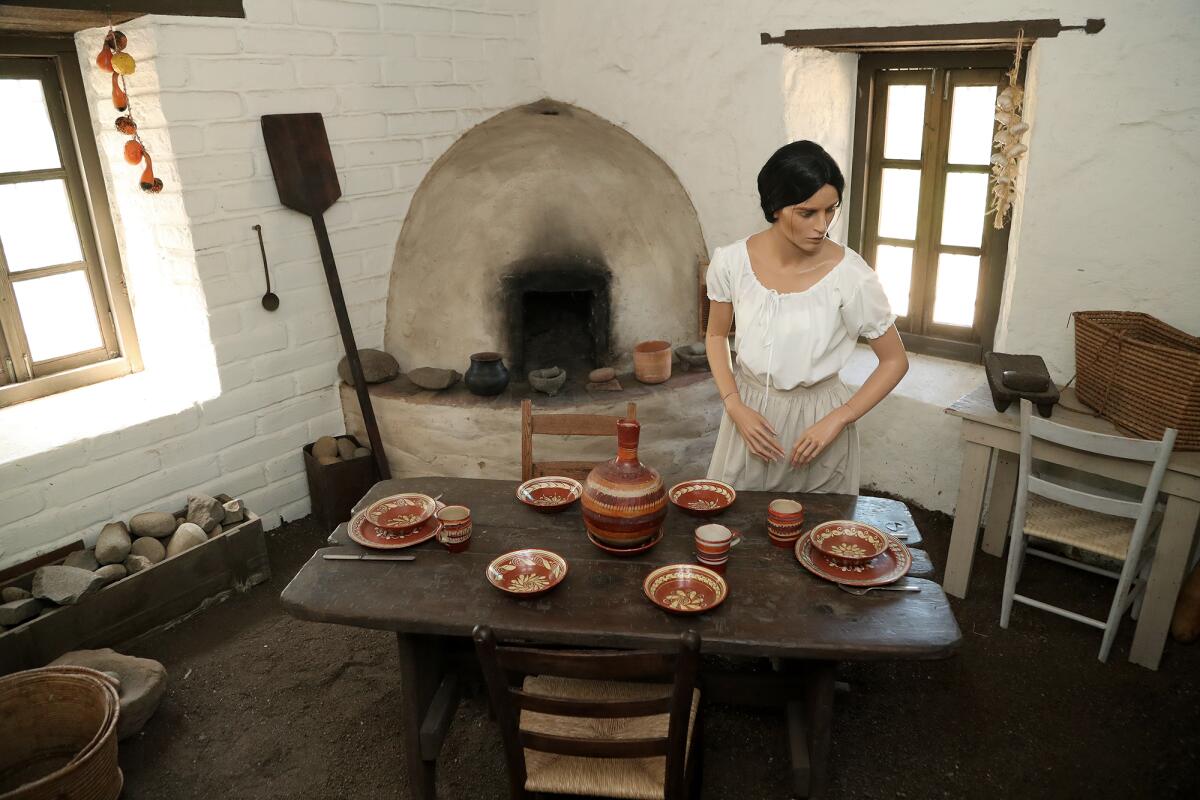
The museum was shuttered in 2020, due to the COVID-19 pandemic and some conditional problems in the building, where pesky ground squirrels had burrowed through the dirt floor of the kitchen area.
But now, after some recent spiffing up from the city, the Diego Sepulveda Adobe has opened once more to the visiting public — news that will be celebrated during an Oct. 1 grand reopening celebration.
Starting at noon, visitors can take a look inside the structure, participate in a series of family-friendly activities and crafts and hear a talk by cultural anthropologist Stephen O’ Neil on the area’s early history and the native cultures that resided there.
The reopening will be an opportunity to introduce or re-introduce the museum, open the first and third Saturday of each month, from noon to 4 p.m. and by appointment, to members of the local community.
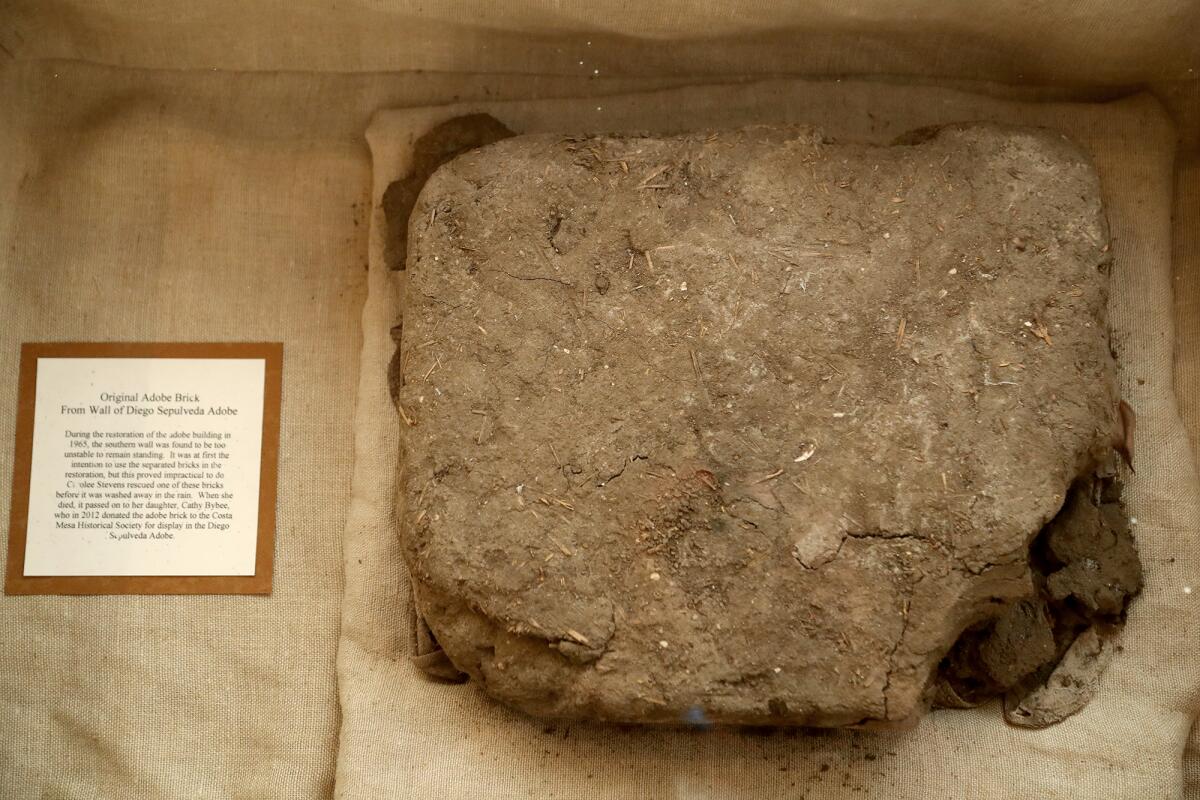
“A lot of people don’t really know about this, even Costa Mesa people,” Steck said Thursday during a tour of the property. “Most people think it’s the [park] restrooms.”
But inside the modest structure, whose core walls are a combination of original and restored adobe bricks fashioned from mud, sand and straw, is a treasure trove of relics from several bygone eras.
Docent Estelle Sewell Hughes points to a chain of title document produced in 1810 that records the ownership of the land, then part of the Rancho Santiago de Santa Ana, under Mission San Juan Capistrano.
In the two centuries that followed, the property passed hands from retired Catalonian soldier Jose Antonio Yorba to his nephew and, in 1868, as the Mission Period passed and mission lands were expropriated, to Mexican rancher Eduardo Pollereno, namesake of Costa Mesa’s Paularino Avenue.
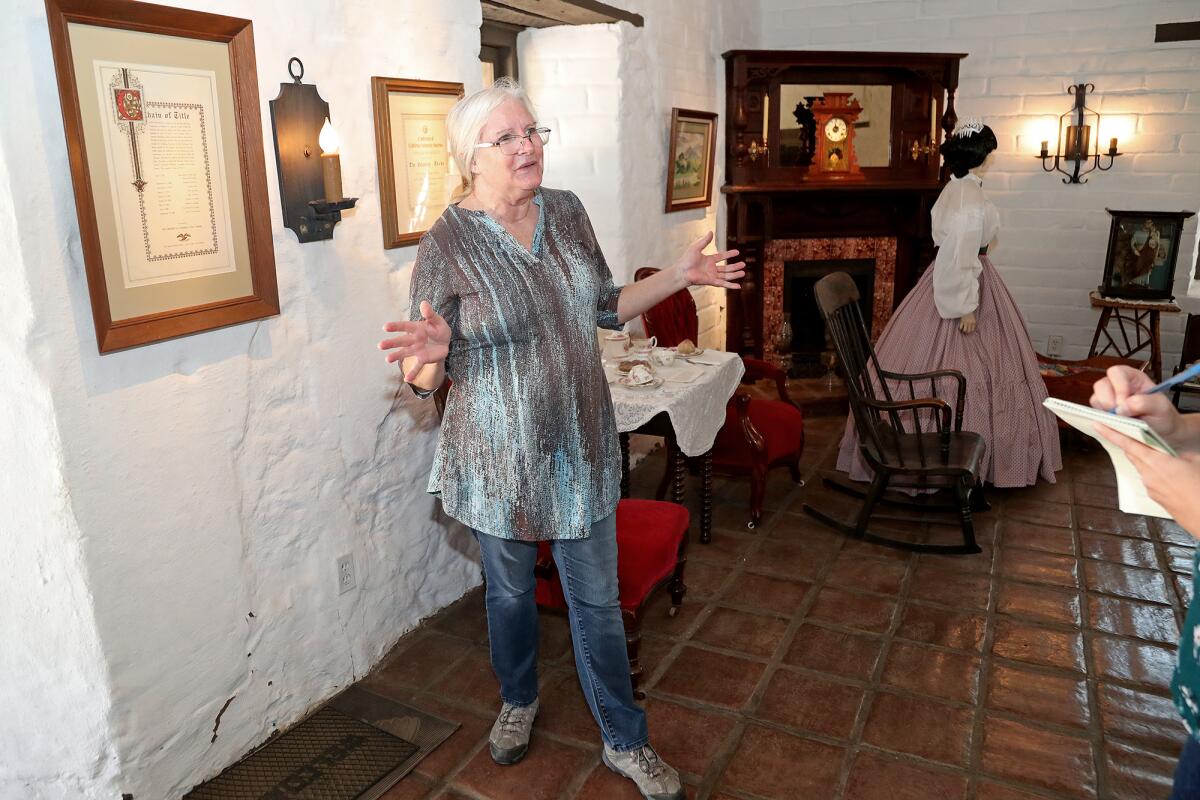
“This is one of the three oldest standing buildings in Orange County,” Hughes said. “And it’s the most complete adobe building for miles — it really is quite special.”
Hughes explained the building, also referred to as the Estancia Adobe, got its current name from a relative tied to the family by marriage, even though it was acquired in 1870 by an Angeleno named Gabe Allen, who’d fought in the Mexican war.
Allen encased the structure in wood, an act that ultimately spared the building from the fate of hundreds of similar adobes in California. In 1940, the building and the vast acreage surrounding it was purchased by Orange County entrepreneur and philanthropist Henry Segerstrom.
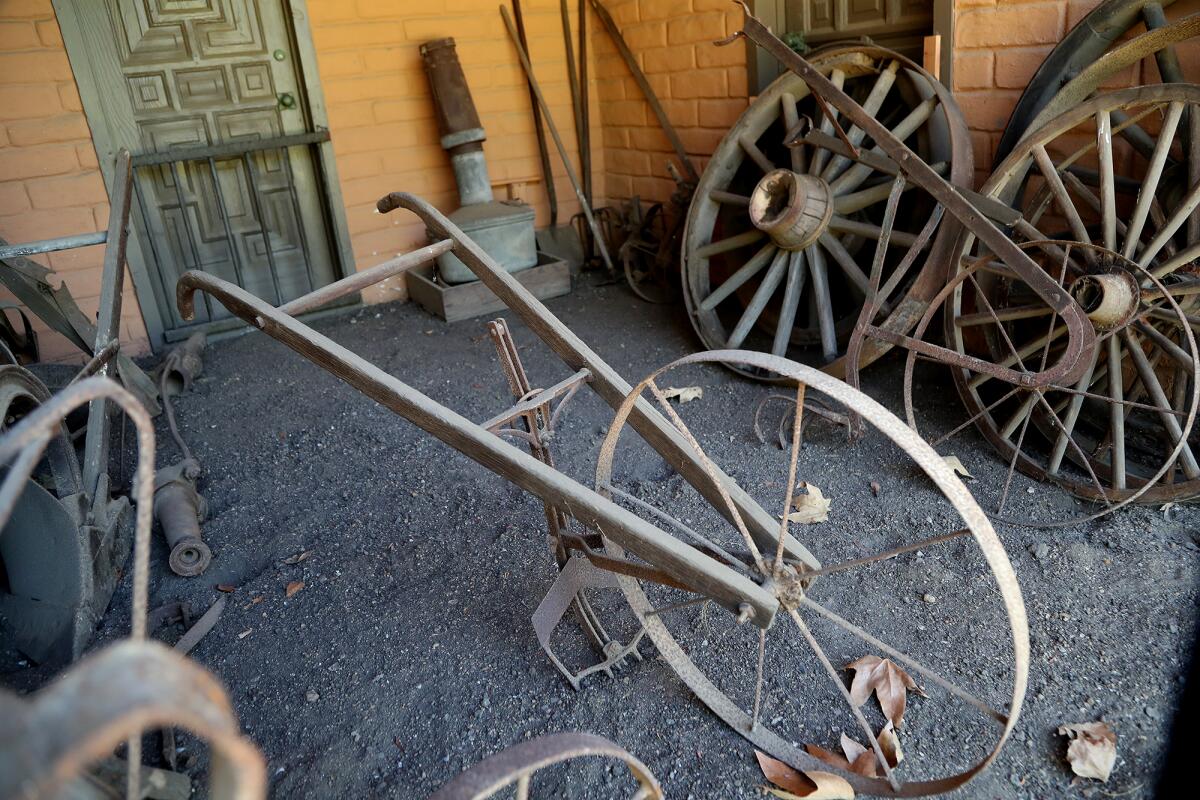
An agricultural family was living on the property in 1961, when a fire broke out and destroyed much of the wooden additions that had been built onto the original structure. A team of experts spent two years rebuilding the adobe, at which time Segerstrom gifted it to the city of Costa Mesa.
“At the time, Mr. Segerstrom felt this was too important, so he donated the acreage to preserve the adobe and create the park around it,” Hughes said.
By 1966, the Costa Mesa Historical Society had been created to preserve and promote local history and also to oversee the site.
“We take care of the interior displays and manage programs, and the city is in charge of maintaining the physical building,” Hughes explained.
Steck said the upcoming grand reopening event is the perfect time for people to come out to the adobe and learn more about the property and the history of the surrounding area.
“I think too few people really care about what happened a long time ago,” she said. “This is a wonderful place to learn about the place you live. It’s a history classroom.”
The Diego Sepulveda Adobe is located in Costa Mesa’s Estancia Park, 1900 Adams Ave., and is open to the public every first and third Saturday, from noon to 4 p.m. For more, visit costamesahistory.org.
All the latest on Orange County from Orange County.
Get our free TimesOC newsletter.
You may occasionally receive promotional content from the Daily Pilot.






